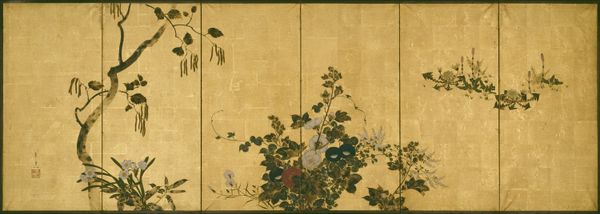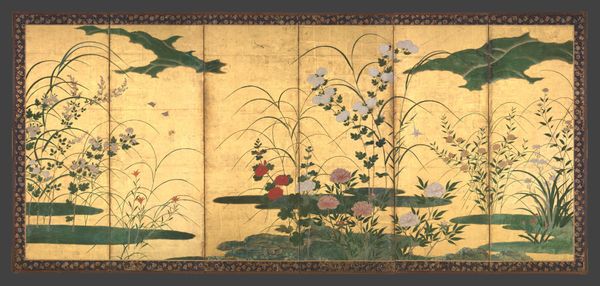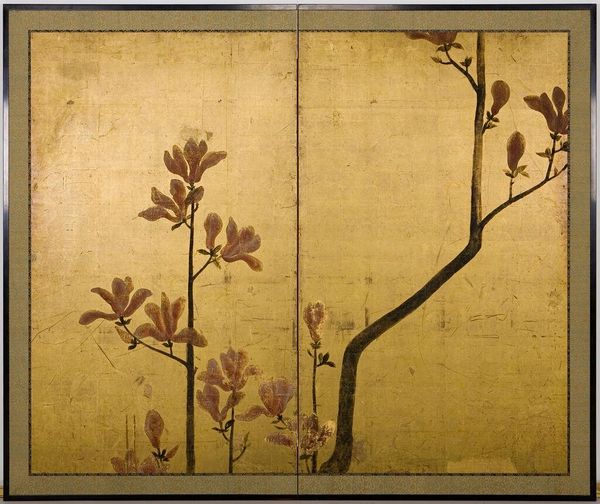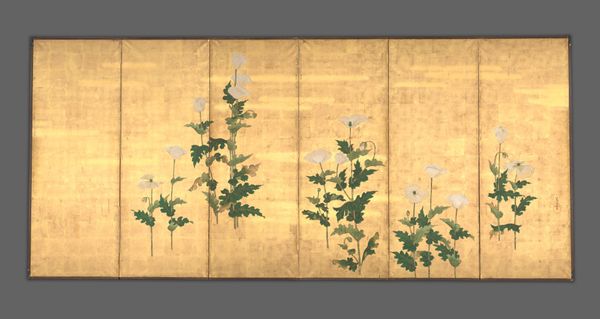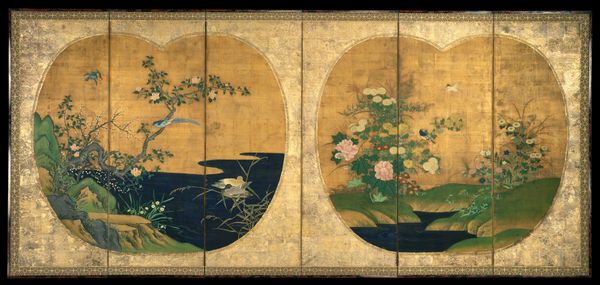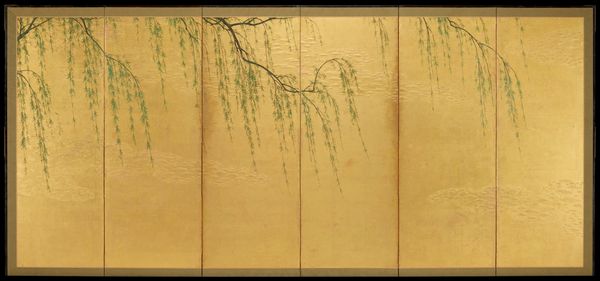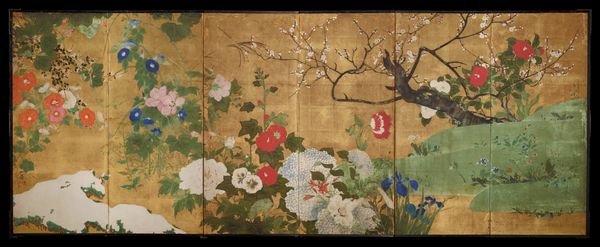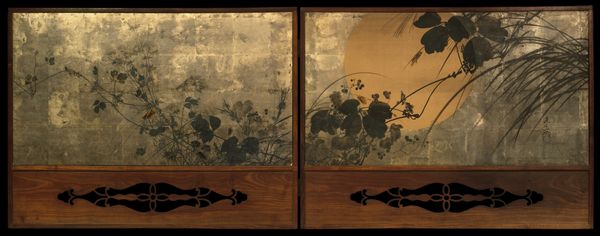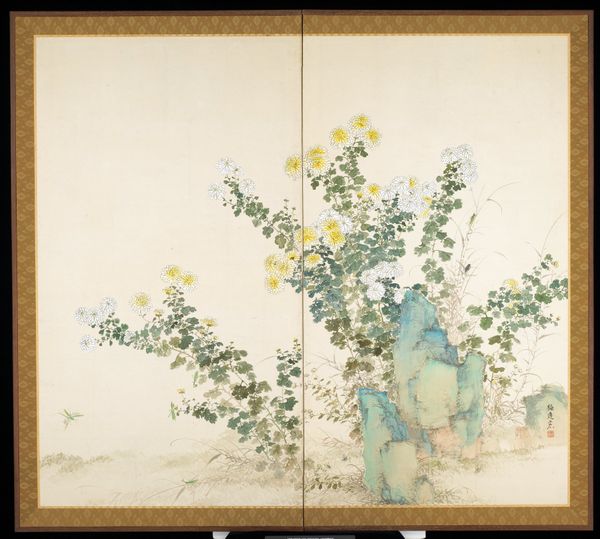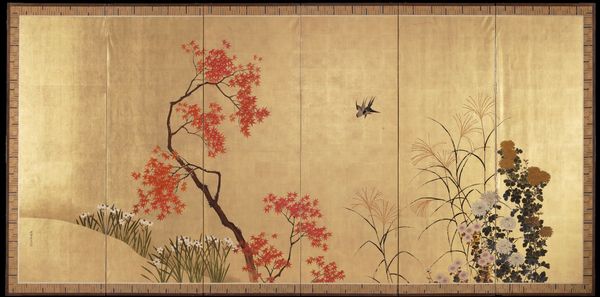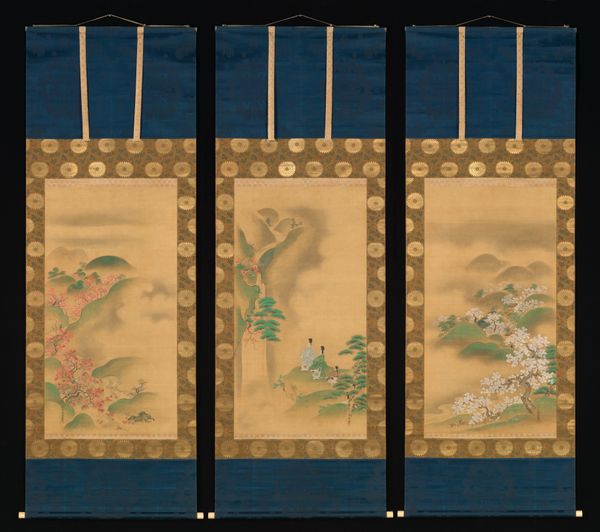
collage, tempera, painting, gold, mural, pendant
#
collage
#
tempera
#
painting
#
asian-art
#
gold
#
landscape
#
figuration
#
mural
#
pendant
Dimensions: 65 3/4 in. × 12 ft. 3 1/2 in. (167 × 374.7 cm)
Copyright: Public Domain
Editor: Here we have "Red and White Poppies," attributed to Tosa Mitsumochi, created sometime between 1600 and 1633. It appears to be tempera and collage with gold on a six-panel screen. It's so striking; the gold background gives it such a luxurious feel, yet the poppies are delicate and understated. What strikes you about this piece? Curator: The immediate visual impact is indeed the combination of opulent material and simple floral motifs. As a historian, I see this work deeply rooted in the socio-political climate of its time. This screen likely served as a status symbol for the elite, reflecting wealth through its materials and refined artistic style through its allusions to court painting traditions. Do you notice how the composition places the poppies against a seemingly endless gold ground? Editor: Yes, the flowers almost float. The black and white checkered pattern in the lower right is really interesting too, because it grounds them and makes them feel both real and abstract at the same time. Curator: Exactly. That checkerboard is a fascinating element. It is a conventional geometric pattern, but its depiction here likely speaks to the evolving merchant class of the Edo period. We must remember that artists were often caught between satisfying aristocratic patrons and reflecting the sensibilities of a rising merchant class. Editor: That’s so interesting, the idea that a single piece could speak to so many different audiences. Curator: Precisely. Now consider the scale – it’s a room divider. Think about how that informs its social role; how people would have interacted with this image, in that specific place, speaks volumes. It turns it into a performative act for its owner. Editor: I never considered the room itself as part of the artwork, like setting the stage for an encounter. I’ll definitely look at art differently now. Curator: Excellent, because art never exists in a vacuum. Considering its cultural and historical setting makes any piece infinitely richer.
Comments
No comments
Be the first to comment and join the conversation on the ultimate creative platform.


